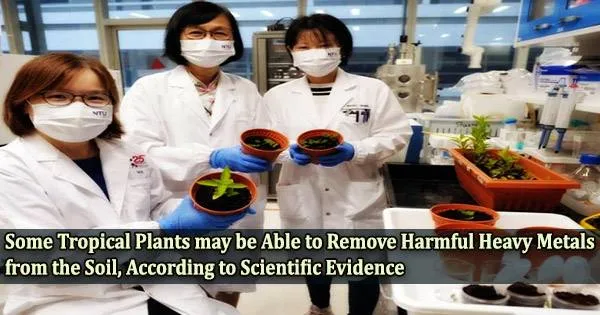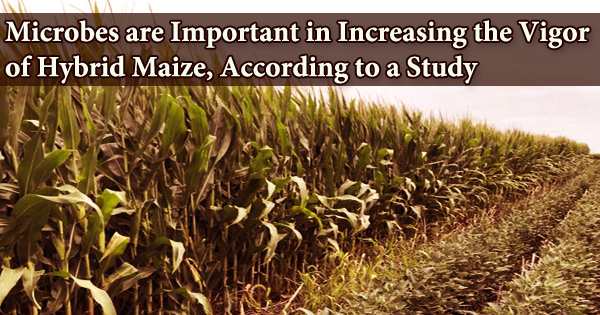Some plant species have been shown to have the ability to assist remove harmful heavy metals and metalloids from contaminated soil by a team of researchers from Nanyang Technological University, Singapore (NTU Singapore) and Singapore’s National Parks Board (NParks).
Phytoremediation is the process of removing and storing pollutants from soil using plants. The researchers initially checked samples of the prospective plants for concentrations of heavy metals and metalloids to see if they were capable of phytoremediation. A high concentration detected suggested an ability to absorb the pollutants.
The research team from Singapore found that there are tropical plants that are already in existence that might be useful for cleaning up contaminated land. The study’s focus was on commonly accessible plants, both native and Singapore-native species. Thus, they could be added to and withdrawn from areas of land with no negative effect on ecosystems, which could result in the creation of a sustainable and environmentally friendly method of managing soil pollutants.
The findings were published in the scientific peer-reviewed journal Environmental Pollution in February.
Professor Lam Yeng Ming, Chair of NTU’s School of Materials Science and Engineering, who co-led the study, said:
“In a small nation like Singapore, land may be repurposed to support new development plans, so it is important that we have a green and sustainable way to remediate land that is contaminated. We set out to uncover how to better make use of tropical plants to do phytoremediation and through advanced characterisation techniques, we showed how some of these tropical plant species can be an environmentally friendly and literally a “green” way to remove contaminants in soil. Phytoremediation also has benefits of cost effectiveness, simplicity of management, aesthetic advantages, and long-term applicability and sustainability. The strategy prevents erosion and metal leaching by stabilising or accumulating heavy metals, so that helps reduce the risk of contaminant spread.”
Our results revealed there were regions where levels of heavy metals and metalloids were relatively high and could affect the environment and the health of flora and fauna in Singapore. This would call for preventive actions, such as our method of using plants to remove these toxic materials, to be employed to minimise heavy metal contamination.
Professor Tan Swee Ngin
The team conducted a field survey and collected soil and plant samples between March 2019 and January 2020. A total of 46 plant species were studied as potential candidates for phytoremediation.
Among them, 12 plant species, which include the commonly seen Cow Grass (Axonopus compressus), hyperaccumulators like the Brake Fern (Pteris vittata) and the Indian Pennywort (Centella asiatica), were effective for the accumulation of several types of heavy metals and metalloids.
Heavy metals and metalloids, including cadmium, arsenic, lead, and chromium, that may be hazardous to humans and animals were the elements examined in the study. They occur naturally in soils, but rarely at toxic levels.
However, they can accumulate and reach higher levels over a long period of time, as heavy metal particles from air pollution (e.g. vehicle emissions, construction activities) tend to accumulate and remain in the top layers of soil.
Other elements that may contribute to excessive levels of heavy metals in soil include the usage of synthetic goods like pesticides, paints, batteries, and industrial waste as well as the spreading of home or industrial sludge on the ground.
The scientists used the Dutch Standard, which gives values for the allowable threshold of environmental contaminants in soils, to determine whether the quantities of heavy metal were harmful. This mode of assessment has also been adopted by Singapore’s government agencies.
Associate Professor Tan Swee Ngin, from the Academic Group of Natural Sciences and Science Education at NTU’s National Institute of Education, who was the study’s co-author, said:
“Our results revealed there were regions where levels of heavy metals and metalloids were relatively high and could affect the environment and the health of flora and fauna in Singapore. This would call for preventive actions, such as our method of using plants to remove these toxic materials, to be employed to minimise heavy metal contamination.”
The NParks researchers involved in the study are from its Centre for Urban Greenery and Ecology. They include Dr. Subhadip Ghosh, Senior Researcher and Mr Mohamed Lokman Mohd Yusof, Senior Research Executive.
The creation of this plant-based method to enhance soil quality is a part of the university’s initiatives to lessen its environmental effect. These efforts are in line with the NTU 2025 strategic plan, which aims to create sustainable solutions to some of the most pressing global problems.
Team’s findings expand potential of environmentally friendly methods
When it comes to removing heavy metals from contaminated soil, traditional commercial solutions like soil washing and acid leaching could be replaced by phytoremediation as a more environmentally friendly solution. These techniques to purge soil of pollutants can be expensive and involve the use of harsh chemicals.
Such activities typically include the use of heavy gear for excavation and soil transfer, and these operations may have a negative impact on the environment by degrading the fertility and health of the soil. Additionally, these techniques carry a significant danger of exposing people or animals to heavy metals.
However, phytoremediation is a slow and long-term commitment and requires prudent management in the removal and disposal of the contaminated plant samples. With enough growth cycles from repeated planting, the amount of heavy metals and metalloids in the soil can eventually be reduced by using various kinds of effective plants to perform phytoremediation in contaminated soils.
To better understand the plants’ efficacy in an urban environment, the collaborative research team is studying the plants on Singaporean pieces of land with high amounts of heavy metals.
Other inorganic particles that are integrated into plants and that can aid in plant growth and enhance the uptake of these pollutants by the plants are also being tested. This will shorten the period of time needed for the heavy metals to be absorbed and so hasten the cleanup process.
















